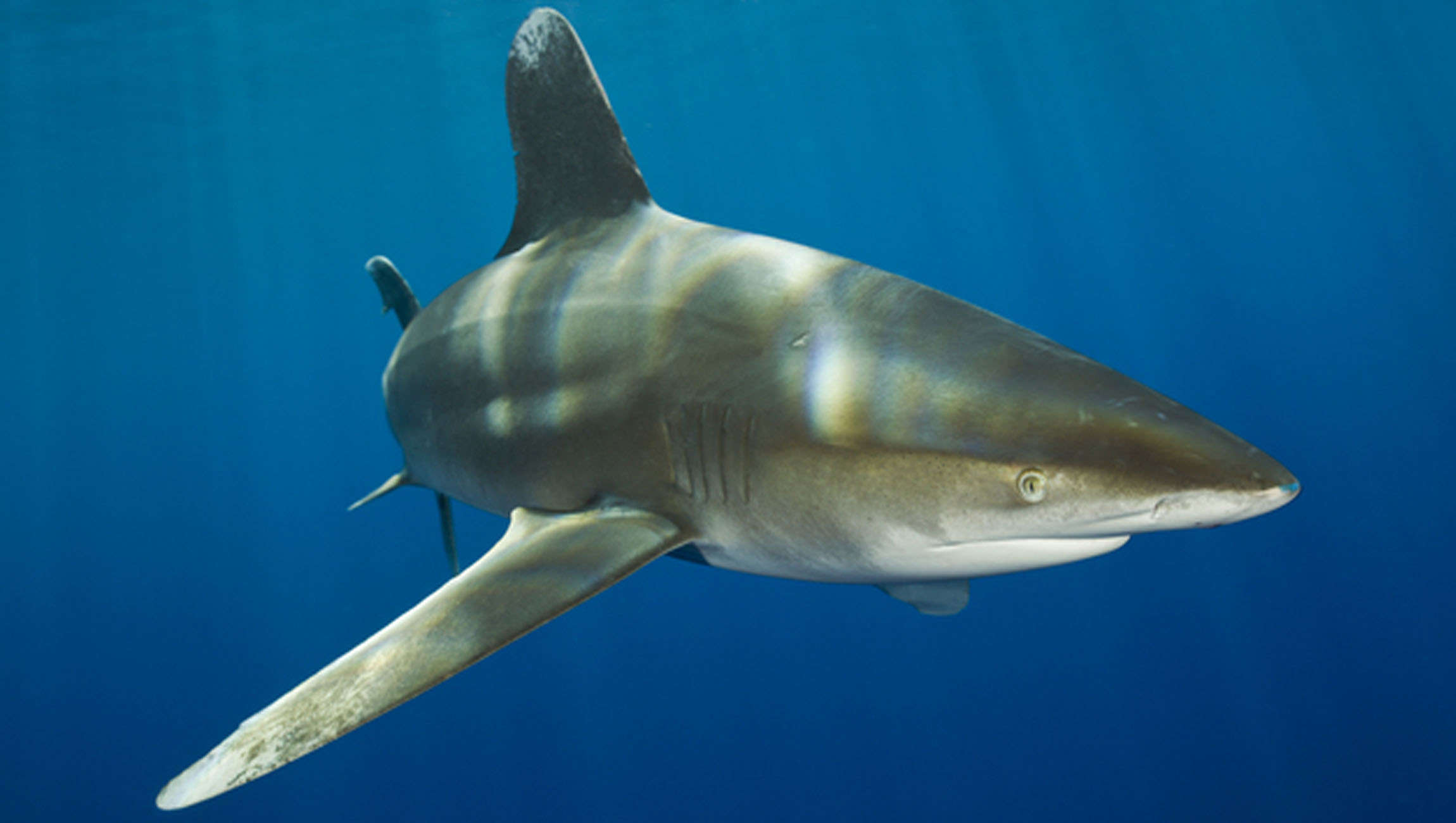Create a free profile to get unlimited access to exclusive videos, sweepstakes, and more!
Whatever this shark escaped from, it was probably a leviathan of a squid

Things that swim in the eldritch depths of the ocean weren’t thought to have anything to do with creatures that seek shallower waters — until now.
It wasn’t that photographer Deron Verbeck was actually looking for a shark that had tried to bite off more than it could chew. When he captured a whitetip shark (like the one above) with strange markings down its back, he knew there was something bizarre going on. What the photo revealed was that those weren’t just any marks, but scars that indicated what could have only been suction rings from a giant tentacle that must have belonged to an equally gargantuan squid. Turned out the shark had gone deeper than usual to seek out a meal, but it didn’t exactly work out.
Verbeck posted the peculiar shark photo to his Facebook right away, but after he sent it to Florida International University shark ecologist Yannis Papastamatiou, he was told to take it down — immediately. This was something no scientist had seen before, and Papastamatiou didn't want it revealed until it was properly studied. Sharks are usually seen as apex predators that are nearly unmatched, but what happens when two species near the top of the food chain clash?
Even stranger is that they normally don’t even swim into each other. Sharks usually stay in the pelagic zone, but those tentacle scars (as seen on the actual shark, below) were likely from one of several species of monster squid that live at least a thousand feet deep.
“While the exact species could not be confirmed, candidate species include the giant squid (Architeuthis dux), or species from the genera Thysanoteuthis [diamondback squid] and Megalocranchia [a species of glass squid],” Papastamatiou said in a study recently published in Journal of Fish Biology. “Telemetry shows C.longimanus [whitetip sharks] will dive within the mesopelagic zone, and may interact with or even forage on large cephalopods.”
Apparently, hunger made this shark go after the Kraken-like creature, which must have been at least 30 feet long, if you count the 27-foot tentacle that left those scars. Papastamatiou and his colleagues believe that when the shark tried to sink its teeth into the squid, it faced unexpected backlash. Giant squid are also known to have sharp teeth embedded in their suckers for extra grip. While predators don’t always get along with other predators in nature, there has never been evidence of any shark getting on the wrong side of an extremely large squid. This also means that creatures which populate different zones of the ocean may not be so isolated as we thought.
Because nobody actually witnessed this Sharktopus sequel in action, there are still things that remain unclear. Whatever tentacle made the markings may have not been the squid’s longest one. If it wasn’t, there is a chance that the cephalopod was even more massive, especially since the largest giant squid ever found was 43 feet long and believed to weigh about a ton. The colossal squid is an elusive species that doesn't fall far behind. Nothing on Earth is known to be bigger than a blue whale, but these behemoths are rumored to be around 46 feet long, with just their mantle, or body, taking up 7-13 feet of that length. Much remains unknown about them since the only specimens studied close have been juveniles.
There is a chance this shark was on the menu if it found itself in the grip of the largest known invertebrate. While there is no evidence of colossal squid preying on sharks, they do go after some pretty big fish, and even other species of deep sea squid. It is still most likely that the shark was the one who started the fight. There is a species of shark that supposedly dares to hunt the colossal squid — that honor goes to the Pacific sleeper shark — but it may not always be successful. The whitetip in the photo certainly wasn’t.
Maybe sharks don’t rule the ocean as much as we thought.


























